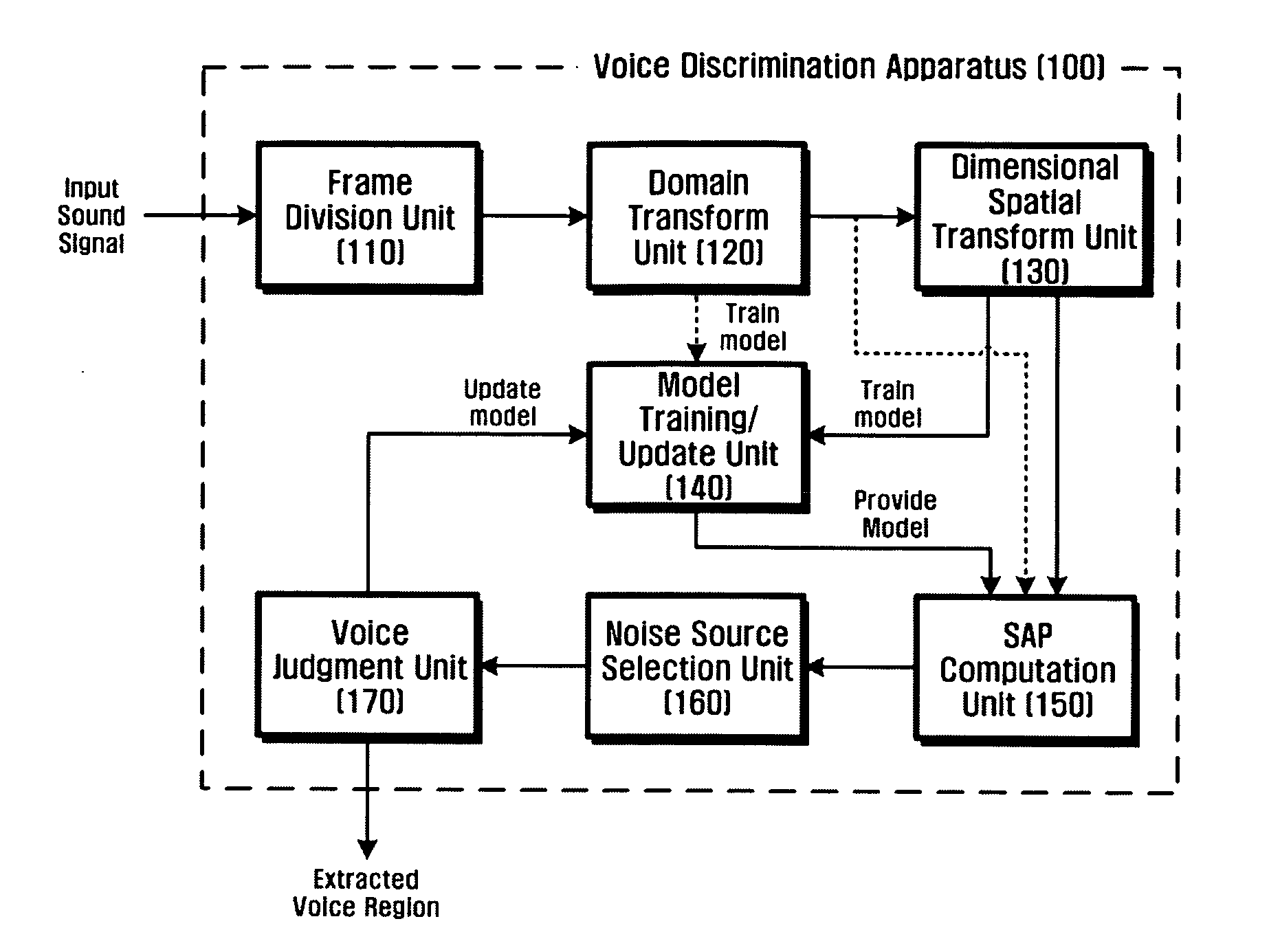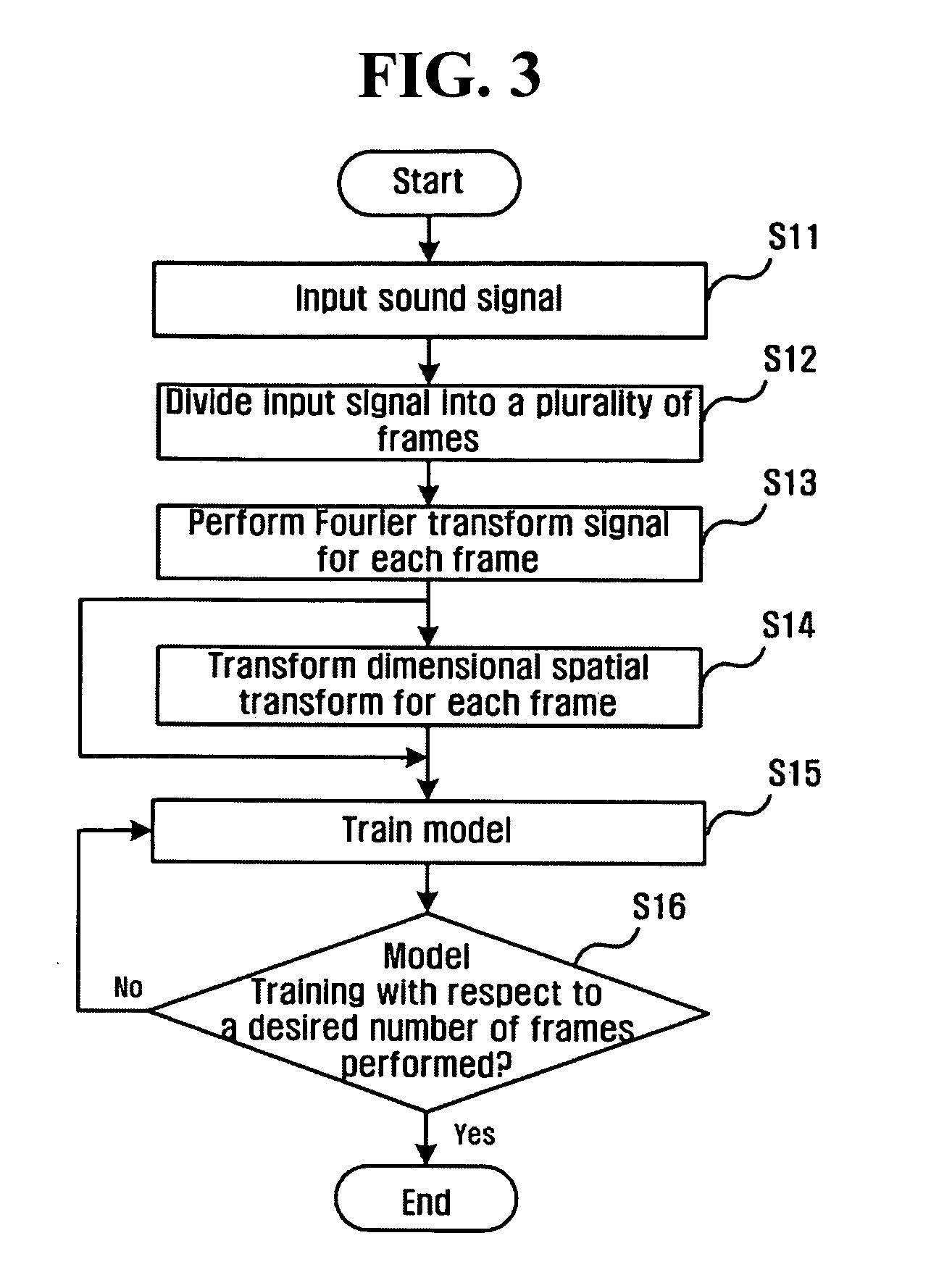Method and apparatus for discriminating between voice and non-voice using sound model
a sound model and discrimination method technology, applied in the field of voice recognition techniques, can solve the problems of inability to predict performance, difficult to discriminate and extract the voice region in certain environments, and inability to consider the variation of input signal over time, etc., and achieve the effect of accurately extracting the voice region
- Summary
- Abstract
- Description
- Claims
- Application Information
AI Technical Summary
Benefits of technology
Problems solved by technology
Method used
Image
Examples
first embodiment
[0043] The voice model and the plurality of noise models may have different parameters by channels. In the case of modeling the voice model by using the Laplacian model and modeling the respective noise models by using the GMM (hereinafter referred to as the first embodiment), the probability that the input signal will be found in the voice model or noise models is given by Equation (4). In Equation (4), m is an index indicative of the kind of noise source. Specifically, m should be appended to all parameters by noise models, but will be omitted from this explanation for convenience. Although the parameters are different from each other for the respective noise models, they are applied to the same equation. Accordingly, even if the index is omitted, it will not cause confusion. In this case, the parameter of voice model is aj, and the parameters of the noise models are wj,l, μj,l , and σj,l. Voice model: PSj[gj(t)]=12ajexp[-gj(t)aj]Noise model:PNjm[gj(t)]=Pm[g...
second embodiment
[0046] In the case in which one voice model is modeled by using the Gaussian model and a plurality of noise models are modeled by using the Gaussian mixture model (hereinafter referred to as the second embodiment), the noise model is given by Equation (4), while the voice model is given by Equation (6). In this case, the parameters of the voice model are μj and σj. PSj[gj(t)]=1πσj2exp[-(gj(t)-μj)2σj2](6)
[0047] In this case, the mixed voice / noise model is given by Equation (7): Pm[gj(t)|H1]=∑lwj,l12πλj,l2exp[-(gj(t)-mj,l)2λj,l2],whereλj,l2=σj2+σj,l2,andmj,l2=μj2+μj,l2.(7)
[0048] The model training / update unit 140 performs not only the process of training the sound model and the plurality of noise models during a training period (i.e., a process of initializing parameters), but also the process of updating the voice model and the noise models for the respective frames whenever a sound signal is inputted that needs a voice and a non-voice to be discriminated (i.e., ...
PUM
 Login to View More
Login to View More Abstract
Description
Claims
Application Information
 Login to View More
Login to View More - R&D
- Intellectual Property
- Life Sciences
- Materials
- Tech Scout
- Unparalleled Data Quality
- Higher Quality Content
- 60% Fewer Hallucinations
Browse by: Latest US Patents, China's latest patents, Technical Efficacy Thesaurus, Application Domain, Technology Topic, Popular Technical Reports.
© 2025 PatSnap. All rights reserved.Legal|Privacy policy|Modern Slavery Act Transparency Statement|Sitemap|About US| Contact US: help@patsnap.com



